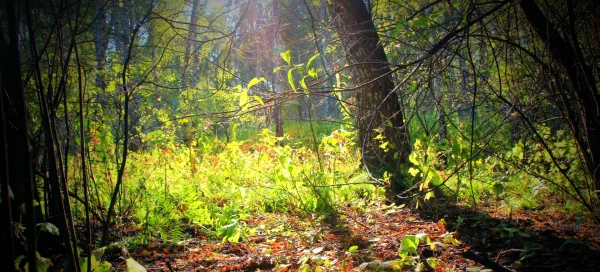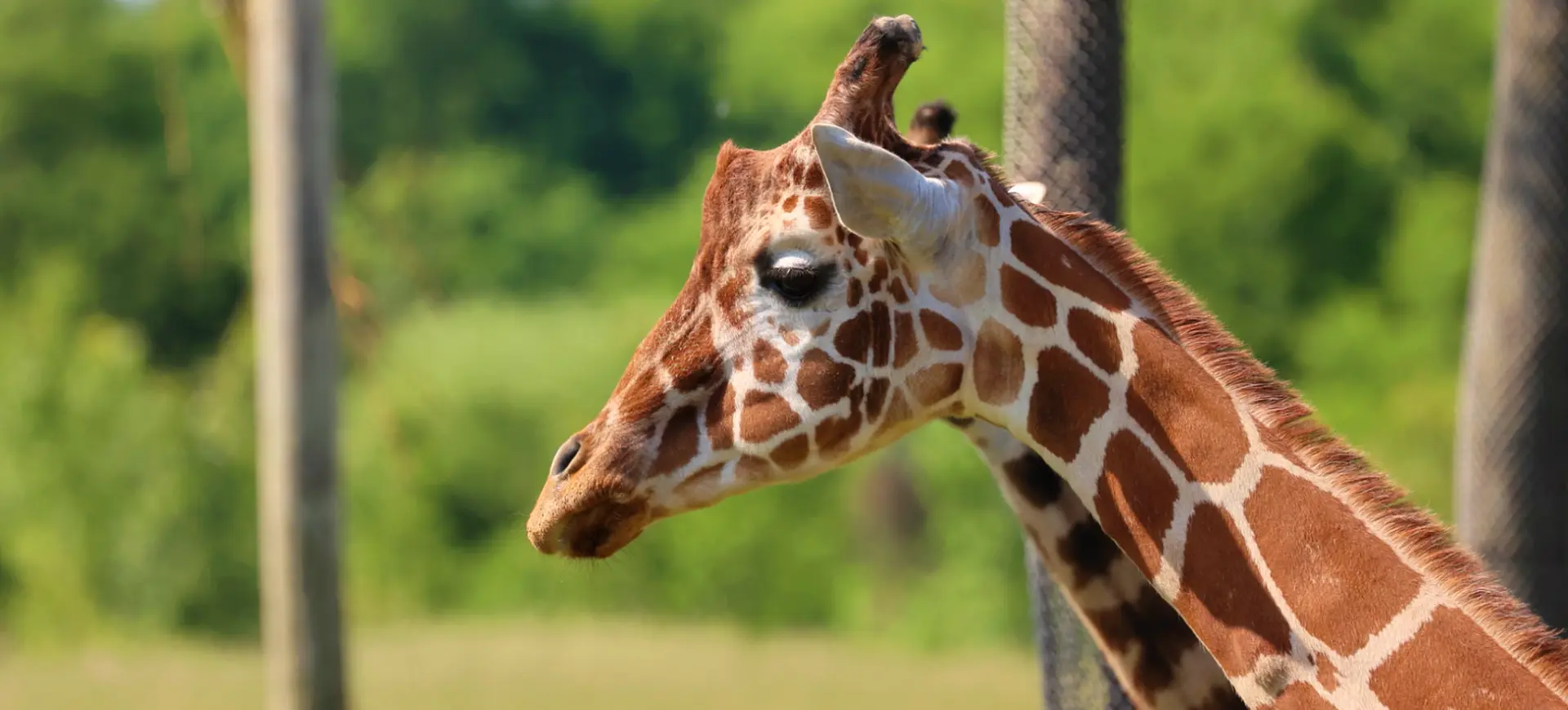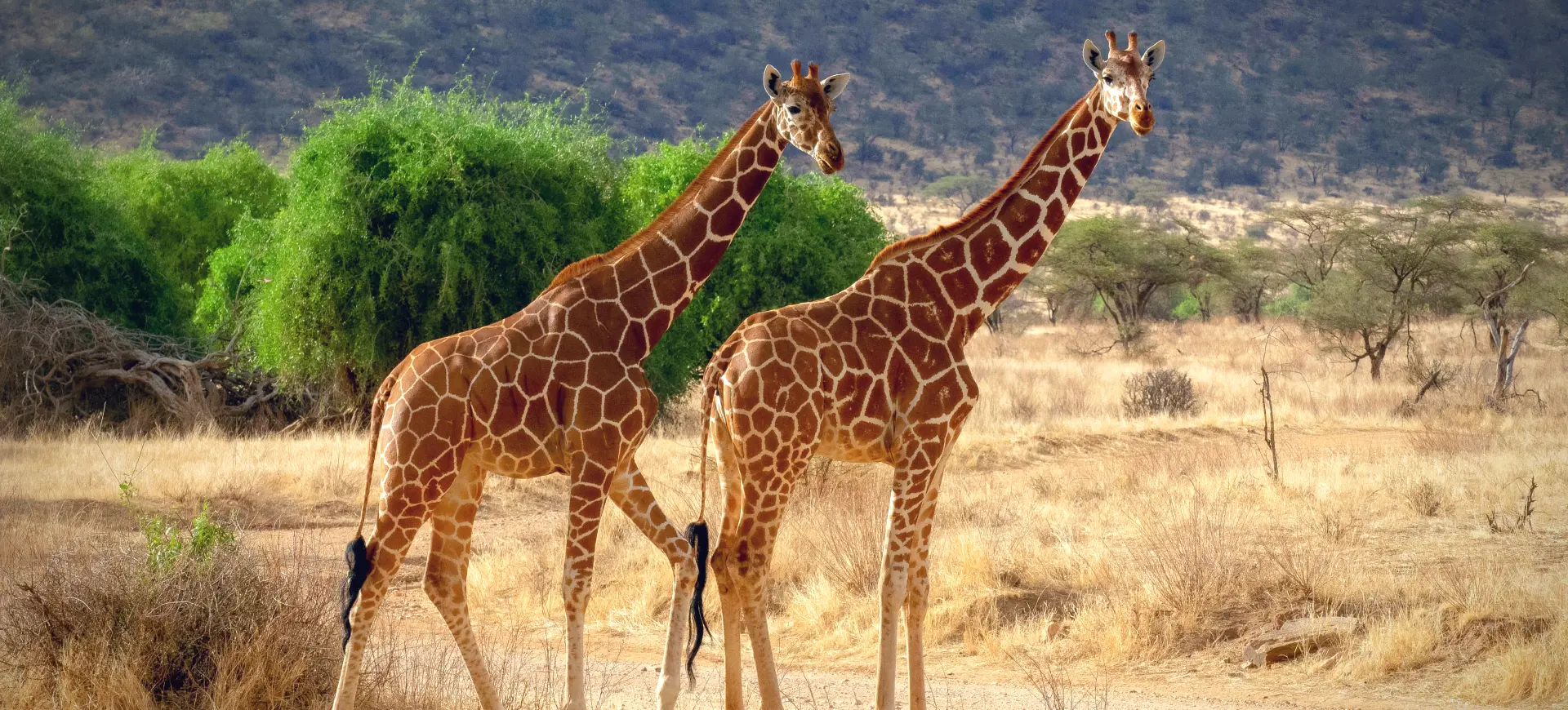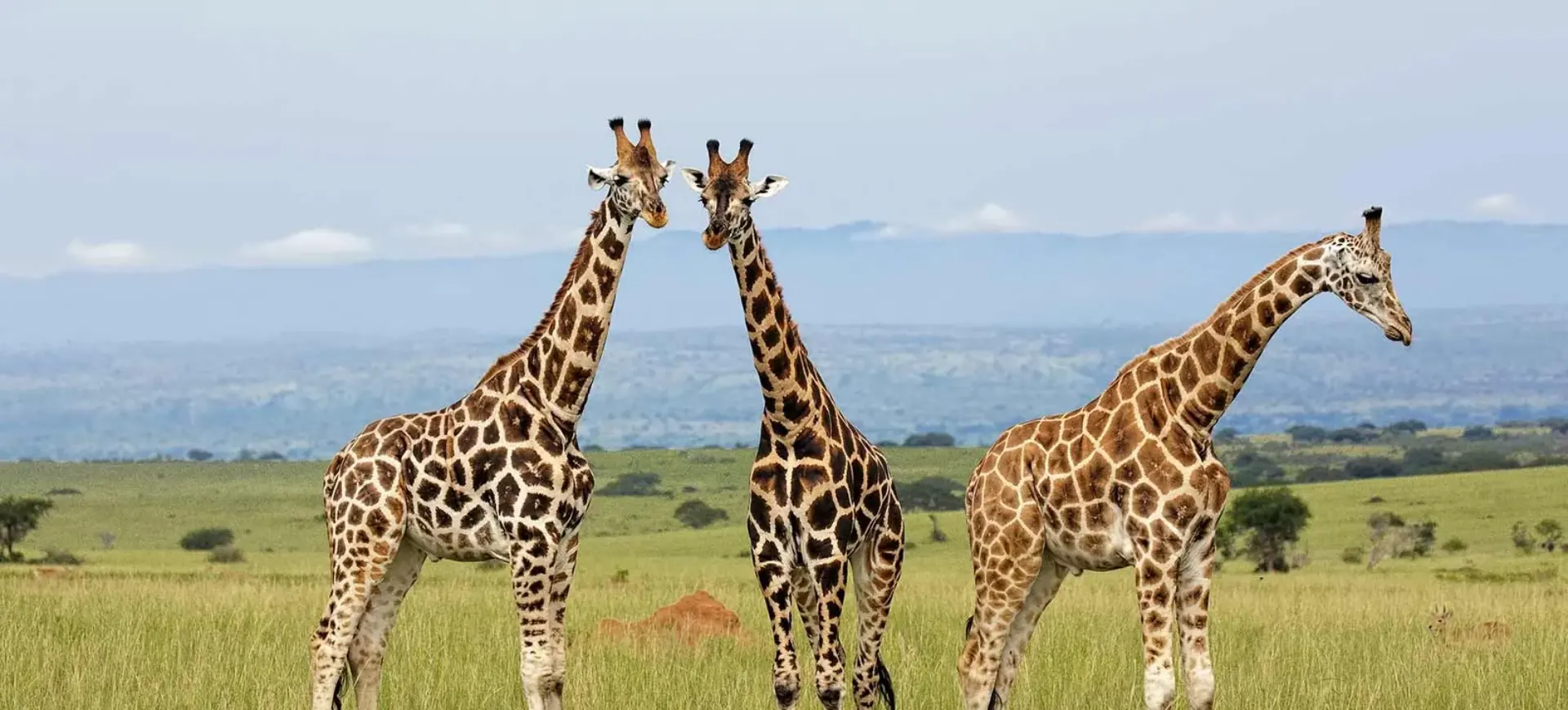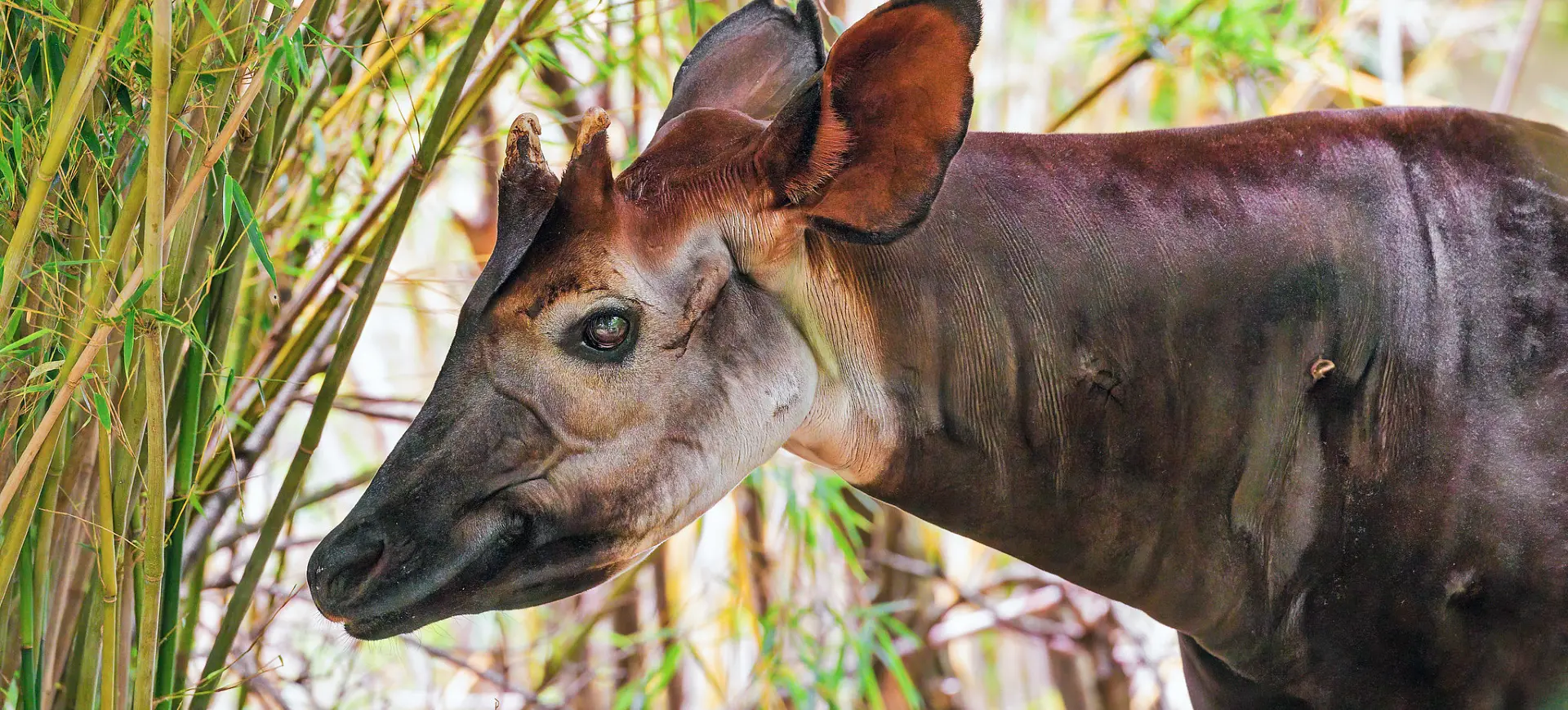Overview
The Masai Giraffe, also known as Kilimanjaro Giraffe, is the largest subspecies of giraffes and holds the prestigious title of the tallest land mammal on the planet. It is easily distinguishable by its pattern of dark-brown, irregular spots that feature jagged edges. These spots are spread across a lighter background, covering the whole body except the lower parts of its legs. This pattern is unique to each individual, akin to the uniqueness of human fingerprints.
Physically, the Masai Giraffe is characterized by its long, slender legs and a body that slopes downward. This distinctive shape is more pronounced in males, who are larger and taller than their female counterparts. A pair of horn-like structures known as ossicones grace their heads, covered with skin and fur.
The ossicones in male Masai Giraffes are typically thicker than those found in females. As they age, males may also exhibit calcium deposits that form discernible bumps on their skulls. This trait, combined with their unique body patterns, contributes to the majestic appearance of the Masai Giraffe.
Taxonomy
Kingdom
Phylum
Class
Order
Family
Genus
Species
Sub Species
Type
Physical Description:
Masai Giraffes are recognized by their distinctive, irregular, star-shaped, dark-brown spots contrasting against a light tan background. Their legs are long and end in large hooves, their necks are elongated, and their heads are adorned with two hair-covered horns called ossicones. Males, larger than females, also have additional bony protrusions on their skulls.
The color of their spots can darken with age, and each Masai Giraffe has a unique pattern, similar to humans with fingerprints. Their eyes are large and prominent, giving them good all-around vision from their height.

Lifespan: Wild: ~25 years || Captivity: ~28 years

Weight: Males: Up to 3,000 lbs (1,360 kg) || Females: Up to 2,600 lbs (1,180 kg)

Height: Males: Up to 19 feet (5.8 meters) || Females: Up to 16 feet (4.9 meters)

Top Speed: 37 mph (60 km/h)
Characteristic:
Native Habitat:
Masai Giraffes, indigenous to East Africa, are largely concentrated in Kenya and Tanzania. These animals are perfectly adapted to various environments, including the savannahs, grasslands, and open woodlands that characterize these regions.
Access to water sources is crucial to their survival, and they also require areas rich in diverse vegetation. This variety in their diet, which includes an array of leaves, fruits, and flowers, contributes significantly to their ability to inhabit different types of landscapes. The flexibility of their habitat preference reflects their adaptability and resilience in the face of ecological variation.
Biomes:
WWF Biomes:
Biogeographical Realms:
Continents:
Diet:
Diet & Feeding Habits:
Masai Giraffes are browsers, feeding primarily on the leaves, twigs, and bark of thorny acacia and myrrh trees, extending their long necks and using their prehensile tongues to maneuver around the thorns. They can consume up to 75 lbs (34 kg) of foliage daily and go weeks without drinking, acquiring most of their water from their food.
Their long, dark-colored tongue (up to 18 inches) helps them pull down high branches and strip them of leaves. They also have a unique ability to close their nostrils to protect against ants and dust when browsing.
Mating Behavior:
Mating Description:
In the life of a Masai Giraffe, there is no fixed breeding season. Reproduction can occur throughout the year, governed by the readiness of females to mate. Male giraffes employ an unusual yet effective method to determine female fertility. This involves a unique behavior called the “flehmen sequence,” during which the male samples the female’s urine.
If the flehmen sequence reveals that the female is fertile, the male transitions to courtship behavior. The process typically involves gentle nudging and lingering around the female, indicating his interest. The lack of a specific breeding season and the unique courtship methods attest to the unique reproductive strategies of these towering creatures.
Reproduction Season:
Birth Type:
Pregnancy Duration:
Female Name:
Male Name:
Baby Name:
Social Structure Description:
Masai Giraffes display a dynamic fission-fusion society characterized by the fluidity of herd composition and size, which can vary daily. These herds are generally non-territorial and inclusive, consisting of individuals of all ages and sexes. However, they may also form single-sex herds on occasion.
To establish dominance within the herd, male giraffes engage in a fascinating behavior known as “necking.” This ritual involves using their long necks as a form of physical interaction, wherein they gently spar. This necking behavior serves as a means of determining hierarchy and social status among males.
Groups:
Conservation Status:
Population Trend:
The Masai Giraffe has witnessed a significant population drop, with numbers falling by almost half over the last 30 years. This dramatic decrease is primarily attributed to the loss of their natural habitats and the threat of illegal hunting.
Presently, the largest concentrations of these majestic creatures are found in Tanzania. Protected areas such as the renowned Tarangire and Serengeti National Parks harbor most of the Masai Giraffe populations, offering them refuge from human-induced threats and providing an opportunity for their numbers to stabilize and possibly increase.
Population Threats:
The Masai Giraffe faces several significant threats to its survival. Among these are habitat loss and fragmentation, which result from human activities like deforestation and expanding settlements. Illegal hunting, commonly known as poaching, poses another major threat to their populations, as they are often targeted for their valuable body parts.
Furthermore, human-wildlife conflict also contributes to the challenges faced by these graceful creatures. Encounters with humans, particularly in areas where land use conflicts arise, can lead to detrimental outcomes for the giraffes. Additionally, long-term environmental changes, including habitat degradation and the impact of climate change on their food resources, further exacerbate their vulnerability, making their conservation a pressing concern.
Conservation Efforts:
Comprehensive conservation initiatives have been implemented to safeguard the future of Masai Giraffes. One essential aspect involves protecting their natural habitats by creating and maintaining protected areas and wildlife reserves. Engaging local communities in conservation efforts is equally vital, with community-based programs promoting coexistence and sustainable practices.
Combatting the threat of illegal hunting and poaching is crucial for preserving this species. Anti-poaching measures are consistently enforced to deter illegal activities and safeguard these gentle giants. Additionally, scientific research is pivotal in better understanding their ecology, behaviors, and habitat requirements. This knowledge helps inform and shape effective conservation strategies. Complementing these in-situ efforts are captive breeding programs in zoos worldwide, enhancing genetic diversity and safeguarding against population decline. Together, these collective endeavors pave the way for the continued survival and protection of the Masai Giraffe.
Additional Resources:
Fun Facts
- Masai Giraffes have the same number of vertebrae in their necks as humans: seven.
- They have a top speed of 37 mph and can maintain 31 mph for several miles.
- Their long tongue helps them reach foliage other herbivores can’t, and it’s tough and prehensile to handle thorns on acacia trees.
- Masai Giraffes can eat up to 75 lbs of foliage per day.
- Despite their long legs, giraffes are excellent swimmers.
- They have the shortest sleep requirements of any mammal, between 10 minutes and two hours in a 24-hour period.
- Giraffes are very quiet animals but they do have vocal cords.
- Their unique walking gait involves moving both legs on one side forward at the same time.
- The Masai Giraffe’s heart can weigh up to 25 lbs, necessary to pump blood up to its brain.
- Female giraffes often return to where they were born to give birth.



